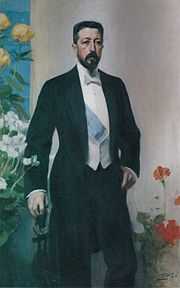Design
Design
Personality
Chart Properties
Your Cross represents the specific theme of your life. This cross embodies your unique potential & the lessons you're here to learn, providing a roadmap to fulfilling your life purpose.
We use the UTC birth time and date to do the calculations required to generate your Human Design chart.
Buy Tokens
Pay as you use, no expiry and no subscription required.Prompt Ideas
Get inspired with some epic prompt ideas.Rockwell Kent's Biography
American artist and writer, among the highest paid commercial artists and one of the most prolific and versatile artists the US ever produced. Kent was equally adept in architecture, textiles, watercolors, engraving, murals, lithographs, cartoon advertising, xylography and oils. Known for his stark, powerful style, he successfully combined the classic in form with the romantic in feeling. Among the most successful artists of the twentieth century, his major works of art include “Winter,” “Down to the Sea,” “Lone Woman” and “Toilers of the Sea.” With various works on display in world class museums in the U.S., Europe and Russia, including the US Post Office Building in Washington, DC, art critic Thomas Craven once wrote “Kent is a man of great talent and a superb craftsman in every department of art.”
Kent was the son of Rockwell Kent, a mining engineer and lawyer, and homemaker Sara Holgate. Kent’s talent showed early and he studied art at New York’s Columbia University, where he studied with Kenneth Hayes, Robert Henri and William Chase. Making his debut at The Exhibition of Independent Artists in 1910, he did not become well known until the publication of his first book, “Wilderness, a Journal of Quiet Adventure in Alaska” in 1920. Inseparable from his art is his writing. “I have always written…I have always had ideas for pictures and ideas to be expressed in words. I’m exactly as much a writer as a painter, not because I do either particularly well, but because I think in terms of art and in terms of literature. ” A globetrotter, Kent lived in Maine, New Hampshire, Alaska, Newfoundland, the South of France, Ireland, Greenland and Tierra Del Fuego, painting exotic landscapes along the way. His second book, “Voyaging Southward From The Straits of Magellan,” 1925, chronicled his foray at the lower tip of South America, followed by “Salomina” in 1935, a tale of his Inuit housekeeper during his three year sojourn in Greenland. The first volume of his autobiography “This Is My Own” was published in 1940.
While conservative in his expression of art, Kent was known as the “stormy petrel of the art world” for his liberal politics. Writing irate letters to nearly every conservative journal in the U.S., he sent a scathing letter of resignation to the Worcester Museum in Massachusetts due to his opinions on the executions of Sacco and Vanzetti and was passionately devoted to the cause of the Loyalist Government in Spain during the Spanish Civil War. During the McCarthy era in 1953, his name was frequently mentioned in the congressional hearing over alleged Communist writers in the State Department overseas.
Defying the ban on the access to civilian Americans beyond the Iron Curtain, Kent ventured into Communist territory and sponsored rallies in Eastern Europe. Upon his return to America in 1950, his passport was voided by the State Department. In protest, Kent launched eight years of litigation in federal courts, until the U.S. Supreme Court granted him another, stating he was entitled to a passport in spite of his political associations. During his testimony he claimed he was “only working for peace,” and “knew very little about the Communist party.” An ardent socialist, Kent was the Chairman of The National Committee of People’s Rights and, in 1967, was awarded the Lenin Peace Prize in Moscow.
Kent’s illustrations of the classics, “Candide,” 1928, “Canterbury Tales,” 1930, “Moby Dick,” 1931 and a later edition of “Beowulf,” have kept these editions in print for decades and are now collector’s items.
In the early 1940s the multi-faceted Kent wrote, illustrated and lectured on “Art and Democracy” while operating a 300-acre dairy farm in Ausable Forks, NY, “Asgaard” by name, which he sold to employees in 1948.
Kent married Kathleen Whiting in 1909. They had five children, Rockwell, Kathleen, Clara, Barbara and Gordon. After the marriage ended in divorce, he married Frances Lee in 1926, a union which also ended in divorce. He was a foster parent of Pablo Fernandez, a son he adopted during his participation in the Spanish Civil War.
In 1940, he made a third marriage, to Sally Johnstone. The second volume of his autobiography “It’s Me, O Lord,” was published in 1955. In his later years he made the remark, “Life has always been, and God help me, always will be so exciting that I want to talk about it. I even rate my being an artist and a writer by being heart and soul a revolutionist. I think that the ideals of youth are fine, clear and unencumbered, and that the real art of living consists in keeping alive the conscience and sense of values we had when we were young.”
Kent died of a stroke in Plattsburgh, New York on 13 March 1971 at age 88.
Link to Wikipedia biography
Your Cross represents the specific theme of your life. This cross embodies your unique potential & the lessons you're here to learn, providing a roadmap to fulfilling your life purpose.
We use the UTC birth time and date to do the calculations required to generate your Human Design chart.






